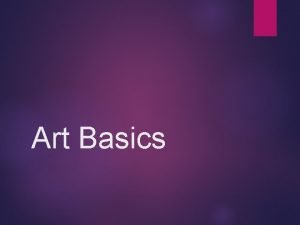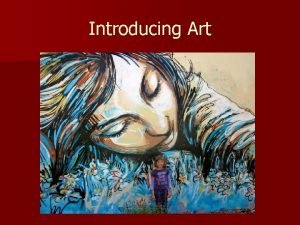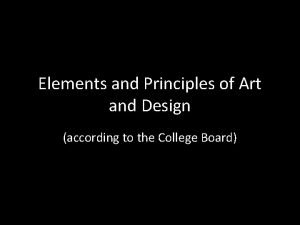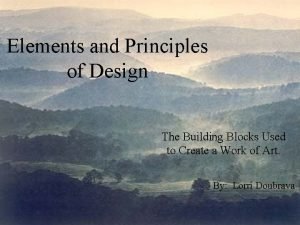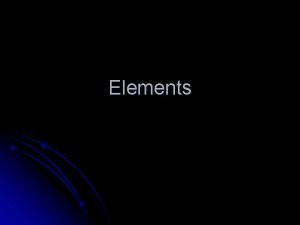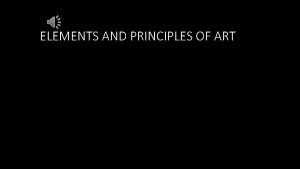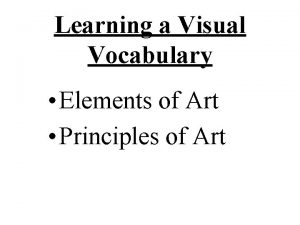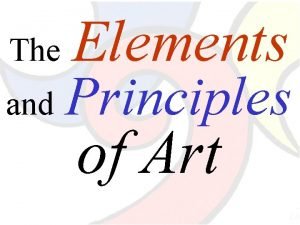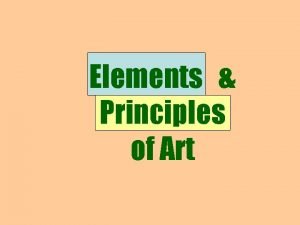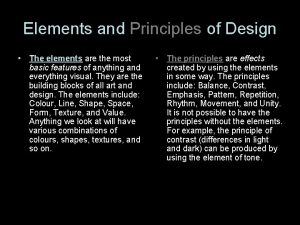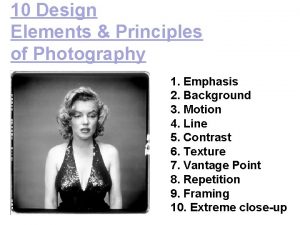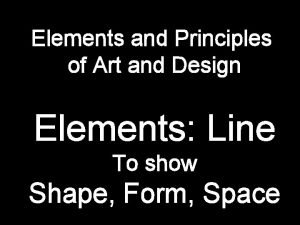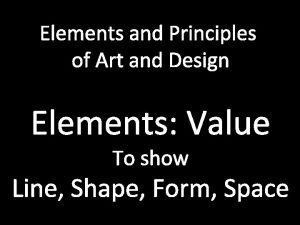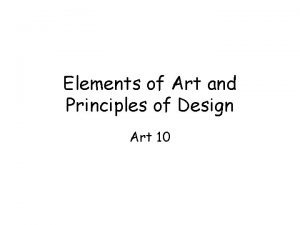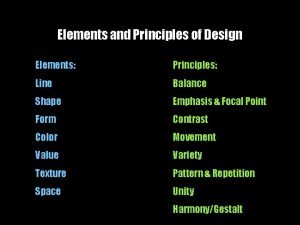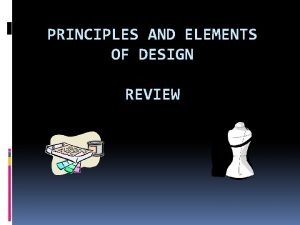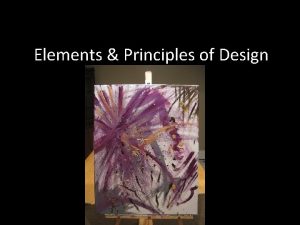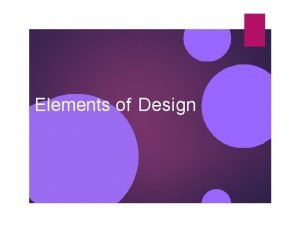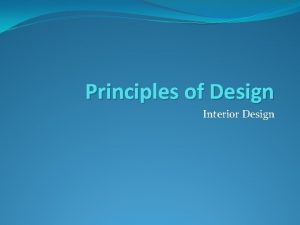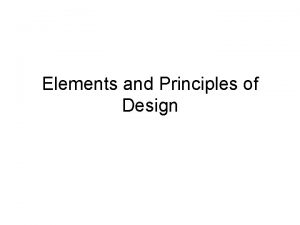Elements and Principles of Art Design The Elements



















- Slides: 19

Elements and Principles of Art & Design

The Elements of Art Line Shape Form Value Texture Colour Red Nose Studios

line A graphic symbol an artist uses to express an idea, represent an object, suggest a mood, etc. Saul Steinberg

shape The structure of an object that has two dimensions. Piet Mondrian

Form The structure of an object that has three dimensions Rene Magritte

Value Light and Dark. Picasso

texture The surface quality of an object, both visual and tactile. Ron Awchuk

colour Made of hue (colour) and intensity (vivid/dull). Willem De. Kooning

Principles of Organization Harmony Pattern Variety Balance Proportion Emphasis Movement Economy Contrast Unity Sam Weber

Harmony The agreement or complement of visual elements in a composition. Edgar Degas

Pattern The repetition of elements. Doug Panton and

variety Variety gives a composition interest and vitality by varying elements. Kate Lemay

balance Balance is a feeling of visual equality. Balance can be symmetrical, asymmetrical or radial. Anita Kunz

Proportion The size of an object in relation to another. Anita Kunz

Emphasis creates (a) focal point(s) for the viewer through: size, color, texture, and shape. A design lacking emphasis will be monotonous. Marcos Chin

Movement in a composition guides the viewer’s eye through the work utilizing design elements. Marcel Duchamp

Economy emphasizes significant element(s) in a composition. The viewer is not bombarded by unnecessary information. Clemente Botelho

contrast Contrast is an abrupt, unexpected change in a visual element. By juxtaposing elements an artist can create a sense of depth. Jillian Tamaki

Unity In a unified work of art, all the parts come together to form a whole. An artist achieves unity by balancing all the aspects (elements and principles) of the composition. Georges Seurat
 Elements and principles of design matrix examples
Elements and principles of design matrix examples Elements and principles of art
Elements and principles of art A feeling of visual equality in shape form value color etc
A feeling of visual equality in shape form value color etc Elements and principles of art
Elements and principles of art L
L Principles of art movement
Principles of art movement Elements of art color
Elements of art color Visual vocabulary art
Visual vocabulary art Principles of arts
Principles of arts Elements principles of art
Elements principles of art Principles of art
Principles of art The mass or general outline of a hairstyle
The mass or general outline of a hairstyle Elements and principles of hair design
Elements and principles of hair design Floral design elements
Floral design elements Principles of design
Principles of design Principles of interior design ppt
Principles of interior design ppt Elements and principles of design matrix
Elements and principles of design matrix Elements and principles of design fashion
Elements and principles of design fashion Elements and principles of design space
Elements and principles of design space Design elements in photography
Design elements in photography
